|
Books Should Be Free Loyal Books Free Public Domain Audiobooks & eBook Downloads |
|
|
Books Should Be Free Loyal Books Free Public Domain Audiobooks & eBook Downloads |
|
History Books |
|---|
|
Book type:
Sort by:
View by:
|
By: Charles Kingsley | |
|---|---|
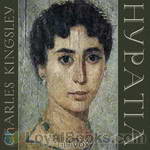 Hypatia
Hypatia
Charles Kingsley (June 12 1819 - January 23 1875) was an English divine, university professor, historian, and novelist, particularly associated with the West Country and north-east Hampshire. As a novelist, his chief power lay in his descriptive faculties, which are evident in this novel as he pictures the Egyptian desert and the ancient city Alexandria. Hypatia, 1st published in 1853, is set in 5th Century A.D. Egypt. It centers upon a young orphan monk from a desert monastery who feels called to continue his religious life in the city... | |
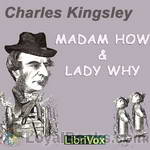 Madam How and Lady Why
Madam How and Lady Why
Did you ever wish you knew how to explain natural phenomena such as earthquakes and volcanoes to your children? Search no more, this book has all the answers (at least all the ones that were known in 1869) and gives them in a pedagogical way. Listed on the Ambleside homeschooling list. | |
By: Charles Knowles Bolton (1867-1950) | |
|---|---|
 Private Soldier Under Washington
Private Soldier Under Washington
Much was been written about the American Revolution, but our knowledge of the private solders of the patriot army is confined chiefly to Washington’s description of their sufferings at Valley Forge. This 1902 book by a Harvard University librarian helps to fill in the picture of the common soldier throughout the war by collating references from a great many primary and secondary sources. - Summary by Book Preface and David Wales | |
By: Charles Mackay (1814-1889) | |
|---|---|
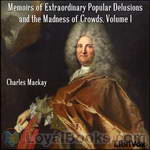 Memoirs of Extraordinary Popular Delusions and the Madness of Crowds
Memoirs of Extraordinary Popular Delusions and the Madness of Crowds
The book chronicles and vilifies its targets in three parts: “National Delusions”, “Peculiar Follies”, and “Philosophical Delusions”.The subjects of Mackay’s debunking include alchemy, beards (influence of politics and religion on), witch-hunts, crusades and duels. Present day writers on economics, such as Andrew Tobias, laud the three chapters on economic bubbles. | |
By: Charles Major (1856-1913) | |
|---|---|
 When Knighthood Was in Flower
When Knighthood Was in Flower
Set during the Tudor period of English history, When Knighthood Was in Flower tells the tribulations of Mary Tudor, a younger sister of Henry VIII of England who has fallen in love with a commoner. However, for political reasons, King Henry has arranged for her to wed King Louis XII of France and demands his sister put the House of Tudor first, threatening, "You will marry France and I will give you a wedding present – Charles Brandon's head!" | |
By: Charles McRae | |
|---|---|
 Fathers of Biology
Fathers of Biology
An account given of the lives of five great naturalists (Hippocrates, Aristotle, Galen, Vesalius and Harvey) will not be found devoid of interest. The work of each one of them marked a definite advance in the science of Biology. There is often among students of anatomy and physiology a tendency to imagine that the facts with which they are now being made familiar have all been established by recent observation and experiment. But even the slight knowledge of the history of Biology, which may be obtained from a perusal of this little book, will show that, so far from such being the case, this branch of science is of venerable antiquity... | |
By: Charles Morris (1833-1922) | |
|---|---|
 Historical Tales
Historical Tales
Volume I of a series containing anecdotes and stories, some well-known, others less so, of particular countries. This first volume comprises the discovery, colonization, founding, and early years of the United States of America, describing history for children and young adults in an exiting and novel manner. | |
 The San Francisco Calamity by Earthquake and Fire
The San Francisco Calamity by Earthquake and Fire
The first half of this book describes the devastating earthquake that hit San Francisco in 1906, and the subsequent destruction caused by fire. Various eyewitnesses and victims give their account on the tragedy. In the second half, a number of different other earthquakes and volcanic eruptions are retold, like the eruption of the Vesuvius that destroyed Pompeij or the explosion of the Krakatoa, together with scientific explanations for the causes of earthquakes and the eruption of volcanos. | |
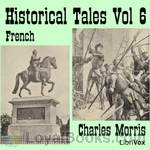 Historical Tales, Vol VI: French
Historical Tales, Vol VI: French
Volume VI of a series containing anecdotes and stories, some well-known, others less so, of particular countries. This fifth volume covers the history of France from the Hun invasion of Europe in the 5th century up to the Prussian War, describing history for children and young adults in an exciting and novel manner. (Introduction by Kalynda) | |
 Historical Tales, Volume VII: Spanish
Historical Tales, Volume VII: Spanish
Volume VII of a series containing anecdotes and stories, some well-known, others less so, of particular countries. This seventh volume covers the history of Spain from before the Moorish conquest to the loss of overseas territories at the end of the 19th century, describing history for children and young adults in an exciting and novel manner. - Summary by Kalynda | |
 Historical Tales, Volume VIII: Russian
Historical Tales, Volume VIII: Russian
These Russian tales span the time of Russia's founding in the 800s-900s all the way to the early twentieth century and are factually based, although particularly the older tales have become legendary. | |
 Historic Tales
Historic Tales
Historical Tales, The Romance of RealityBy CHARLES MORRISPREFACE.It has become a commonplace remark that fact is often stranger than fiction. It may be said, as a variant of this, that history is often more romantic than romance. The pages of the record of man's doings are frequently illustrated by entertaining and striking incidents, relief points in the dull monotony of every-day events, stories fitted to rouse the reader from languid weariness and stir anew in his veins the pulse of interest in human life... | |
By: Charles Waddell Chesnutt (1858-1932) | |
|---|---|
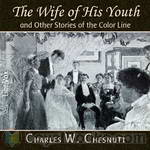 The Wife of His Youth and Other Stories of the Color Line
The Wife of His Youth and Other Stories of the Color Line
Published in 1899, The Wife of His Youth and Other Stories of the Color Line is a collection of narratives that addresses the impact of Jim Crow laws on African Americans and white Americans of the South. Many of Chesnutt's characters are of mixed-race ancestry which sets them apart for a specific yet degrading kind of treatment from blacks and whites. These stories examine particularly how life in the South was informed through a legacy of slavery and Reconstruction—how members of the “old dominion” desperately struggled to breath life into the corpse of an antebellum caste system that no longer defined the path and direction in which this country was headed... | |
 Colonel's Dream
Colonel's Dream
In this novel, Chesnutt described the hopelessness of Reconstruction in a post-Civil War South that was bent on reestablishing the former status quo and rebuilding itself as a region of the United States where new forms of "slavery" would replace the old. This novel illustrated how race hatred and the impotence of a reluctant Federal Government trumped the rule of law, ultimately setting the stage for the rise of institutions such as Jim Crow, lynching, chain gangs and work farms--all established with the intent of disenfranchising African Americans. | |
By: Charlotte Lennox (1730-1804) | |
|---|---|
 The Female Quixote
The Female Quixote
The novel formally inverts Don Quixote: as the don mistakes himself for the knightly hero of a Romance, so Arabella mistakes herself for the maiden love of a Romance. While the don thinks it his duty to praise the platonically pure damsels he meets (such as the woman he loves), so Arabella believes it is in her power to kill with a look and it is the duty of her lovers to suffer ordeals on her behalf. | |
By: Charlotte Maria Tucker (1821-1893) | |
|---|---|
 Spanish Cavalier
Spanish Cavalier
When his father dies, Lucius Lepine goes to Spain as a clerk. His fellow clerk, Don Aguilera, doesn't come to work one day. Lucius is worried, he has heard rumors of what has happened to Aguilera. What has happened? Can Lucius find out? | |
By: Charlotte Mary Yonge (1823-1901) | |
|---|---|
 Unknown to History
Unknown to History
During the captivity of Mary, Queen of Scots, plots, conspiracies, and intrigue engulfed the country. Catholics were apprehensive of Protestants; Scots mistrusted the English. No one felt completely safe. Into the midst of this turmoil was thrust a tiny baby girl, rescued from a storm-tossed sea, the solitary survivor of the wreck of the Bride of Dunbar. Was this unfortunate child - adopted and raised in the bosom of a loving family - connected to the displaced and unhappy Queen Mary? Would she eventually find herself at the mercy of the Elizabeth, Queen of England, or would she find happy bliss with her one true love? | |
By: Charlotte Perkins Gilman (1860-1935) | |
|---|---|
 With Her in Ourland
With Her in Ourland
Third in the trilogy of the feminist classics, after Moving the Mountain and Herland. It was published serially in Perkins Gilman's periodical The Forerunner. In Herland, three American young men discover a country inhabited solely by women, who were parthenogenetic , and had borne only girl children for two thousand years; they marry three of the women. Two of the men and one woman leave the country of Herland to return to America; Jeff Margrave remaining in Herland with his wife, Celis, a willing citizen; Terry O... | |
By: Chester D. Berry (1844-1926) | |
|---|---|
 Loss of the Sultana
Loss of the Sultana
April, 1865. The country was in turmoil. The U.S. Civil War had come to an end, thousands of Union prisoners of war had recently been released, and President Lincoln had just been assassinated. The steamship 'Sultana' left New Orleans on April 21st, traveled to Vicksburg, Mississippi where it took on 1,965 federal soldiers and 35 officers, all recently released prisoners of war, most of them held at the prison camps of Cahaba and Andersonville , and now finally headed for their homes. The 'Sultana' arrived in Memphis, Tennessee on April 26th and headed north toward Cairo, Illinois carrying over 2,100 passengers, but designed for a capacity of only 376... | |
By: Christopher Marlowe (1564-1593) | |
|---|---|
 Edward II
Edward II
Christopher Marlowe's Elizabethan tragedy focuses on the downfall of King Edward II, whose love for his favorite courtier, Piers Gaveston, leads to rebellion. | |
By: Clara Dillingham Pierson (1868-1952) | |
|---|---|
 Among the Farmyard People
Among the Farmyard People
A wonderful children's book filled with engaging stories about various farmyard animals. Each book ending with a moral which gently encourages children towards better behaviour and attitudes. | |
By: Clara Reeve (1729-1807) | |
|---|---|
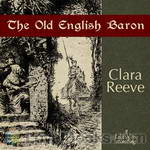 The Old English Baron
The Old English Baron
The story follows the adventures of Sir Philip Harclay, who returns to medieval England to find that the castle seat and estate of his friend Lord Lovel have been usurped. A series of revelations, horrors and betrayals climax in a scene of single combat in which good battles evil for the return of the prize. | |
By: Clara Swain (1834-1910) | |
|---|---|
 Glimpse of India
Glimpse of India
A Glimpse of India: being a collection of extracts from the letters Dr. Clara A. Swain, first medical missionary to India of the Woman's Foreign Missionary Society of the Methodist Episcopal Church in America. - Summary from the book's introduction | |
By: Clarence Edwords (b. 1856) | |
|---|---|
 Bohemian San Francisco
Bohemian San Francisco
While describing his dining experiences throughout “Bohemian San Francisco,” Clarence Edwords paints an historic panorama of California cuisine with all its cosmopolitan influences. Best of all, he offers tantalizing recipes culled from conversations with the master chefs of 1914 in “The City by the Bay.” | |
By: Clement | |
|---|---|
 Women in the fine arts
Women in the fine arts
WOMEN IN THE FINE ARTS FROM THE SEVENTH CENTURY B. C.TO THE TWENTIETH CENTURY A. D.BY CLARA ERSKINE CLEMENT PREFATORY NOTE As a means of collecting material for this book I have sent to many artists in Great Britain and in various countries of Europe, as well as in the United States, a circular, asking where their studies were made, what honors they have received, the titles of their principal works, etc. I take this opportunity to thank those who have cordially replied to my questions, many of whom... | |
By: Cole Younger (1844-1916) | |
|---|---|
 Story of Cole Younger, by Himself
Story of Cole Younger, by Himself
Autobiography of Cole Younger, American Civil War veteran and member of the Jesse James gang. Cole Younger was a member of Quantrill's Raiders during the Civil War and along with his brother, Jim Younger and the James brothers, robbed banks and trains during the 1870's. | |
By: Columbia Accident Investigation Board | |
|---|---|
 Columbia Accident Investigation Board Final Report, Volume 1
Columbia Accident Investigation Board Final Report, Volume 1
In 1981, Columbia became the first spacecraft of its type to fly in Earth orbit and successfully completed 27 missions over more than two decades. During the STS-107 mission, Columbia and its crew traveled more than six million miles in 16 days. The Orbiterʼs destruction, just 16 minutes before scheduled touchdown, shows that space flight is still far from routine. It involves a substantial element of risk, which must be recognized, but never accepted with resignation. The seven Columbia astronauts believed that the risk was worth the reward... | |
By: Confucius (551 BCE-479 BCE) | |
|---|---|
 Confucian Analects
Confucian Analects
The Analects, or Lunyu (simplified Chinese: 论语; traditional Chinese: 論語; pinyin: Lún Yǔ; literally "Classified/Ordered Sayings"), also known as the Analects of Confucius, are considered a record of the words and acts of the central Chinese thinker and philosopher Confucius and his disciples, as well as the discussions they held. Written during the Spring and Autumn Period through the Warring States Period (ca. 475 BC - 221 BC), the Analects is the representative work of Confucianism and continues to have a substantial influence on Chinese and East Asian thought and values today... | |
By: D.H. Montgomery | |
|---|---|
 The Beginner's American History
The Beginner's American History
THE BEGINNER'S AMERICAN HISTORYBy D. H. MONTGOMERYPREFATORY NOTE.This little book is intended by the writer as an introduction to his larger work entitled The Leading Facts of American History. It is in no sense an abridgment of the larger history, but is practically an entirely new and distinct work. Its object is to present clearly and accurately those facts and principles in the lives of some of the chief founders and builders of America which would be of interest and value to pupils beginning the study of our history... | |
By: Daisy Ashford (1881-1972) | |
|---|---|
 The Young Visiters, or Mr. Salteena's Plan
The Young Visiters, or Mr. Salteena's Plan
The Young Visiters is a comic romance novella that parodies upper class society of late Victorian England. Social climber Alfred Salteena introduces his young lady friend Ethel to a genuine gentleman named Bernard and, to his irritation, they hit it off. But Bernard helps Alfred in his plan to become a gentleman, which, Alfred hopes, will help him win back Ethel. | |
By: Dame M. Columban | |
|---|---|
 Irish Nuns at Ypres: An Episode of the War
Irish Nuns at Ypres: An Episode of the War
“…I have charged Dame M. Columban to give a detailed account of all that has befallen the Community, since the coming of the Germans to Ypres till our safe arrival at Oulton Abbey. I can therefore certify that all that is in this little book, taken from the notes which several of the nuns had kept, is perfectly true, and only a simple narrative of our own personal experiences of the War.” The Abbey of the Irish Dames of Ypres was established in 1665. It was a favorite Abbey for the daughters of Irish nobility and was supported by influential Irish families living in exile... | |
By: Dame Shirley (d.1906) | |
|---|---|
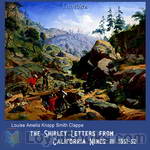 The Shirley Letters from California Mines in 1851-52
The Shirley Letters from California Mines in 1851-52
Louise Amelia Knapp Smith Clappe moved to California from Massachusetts during the Gold Rush of the mid-1800’s. During her travels, Louise was offered the opportunity to write for The Herald about her travel adventures. It was at this point that Louise chose the name “Shirley” as her pen name. Dame Shirley wrote a series of 23 letters to her sister Mary Jane (also known as Molly) in Massachusetts in 1851 and 1852. The “Shirley Letters”, as the collected whole later became known, gave true accounts of life in two gold mining camps on the Feather River in the 1850s... | |